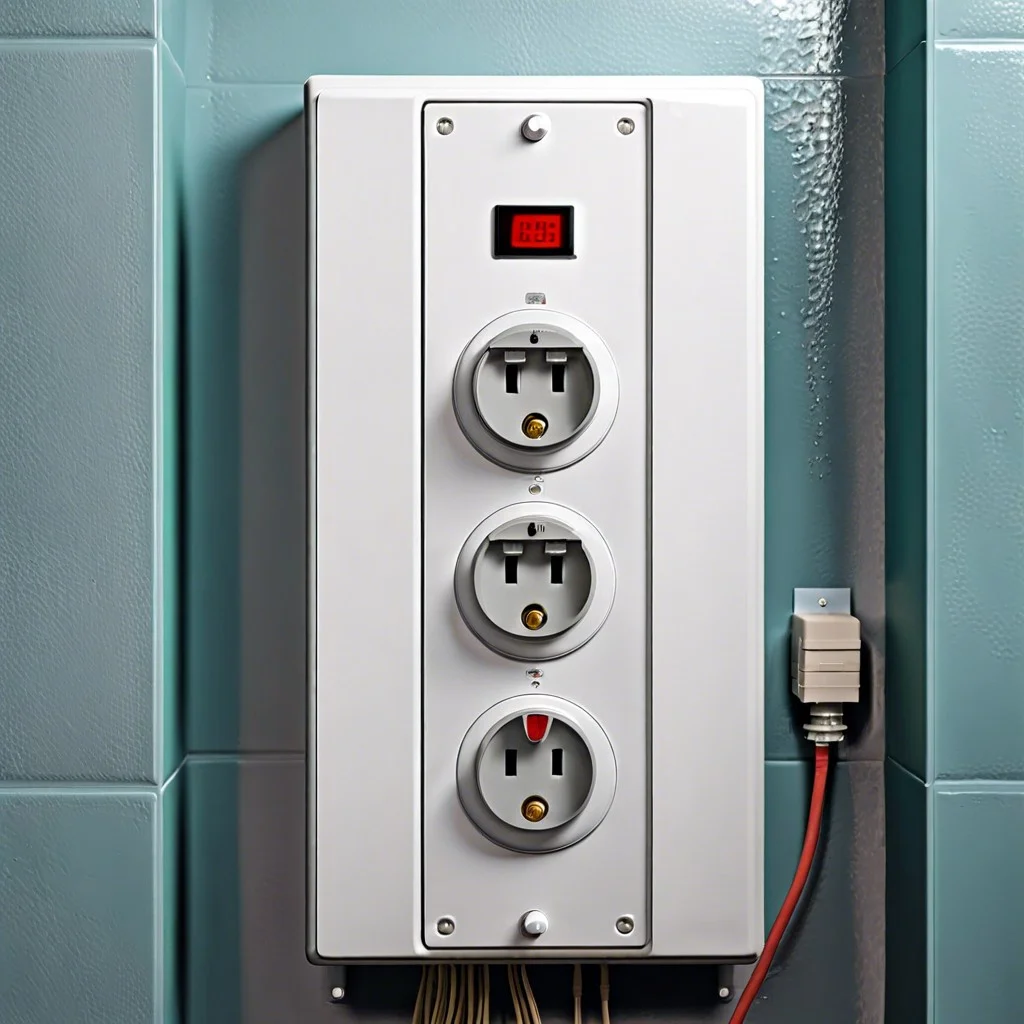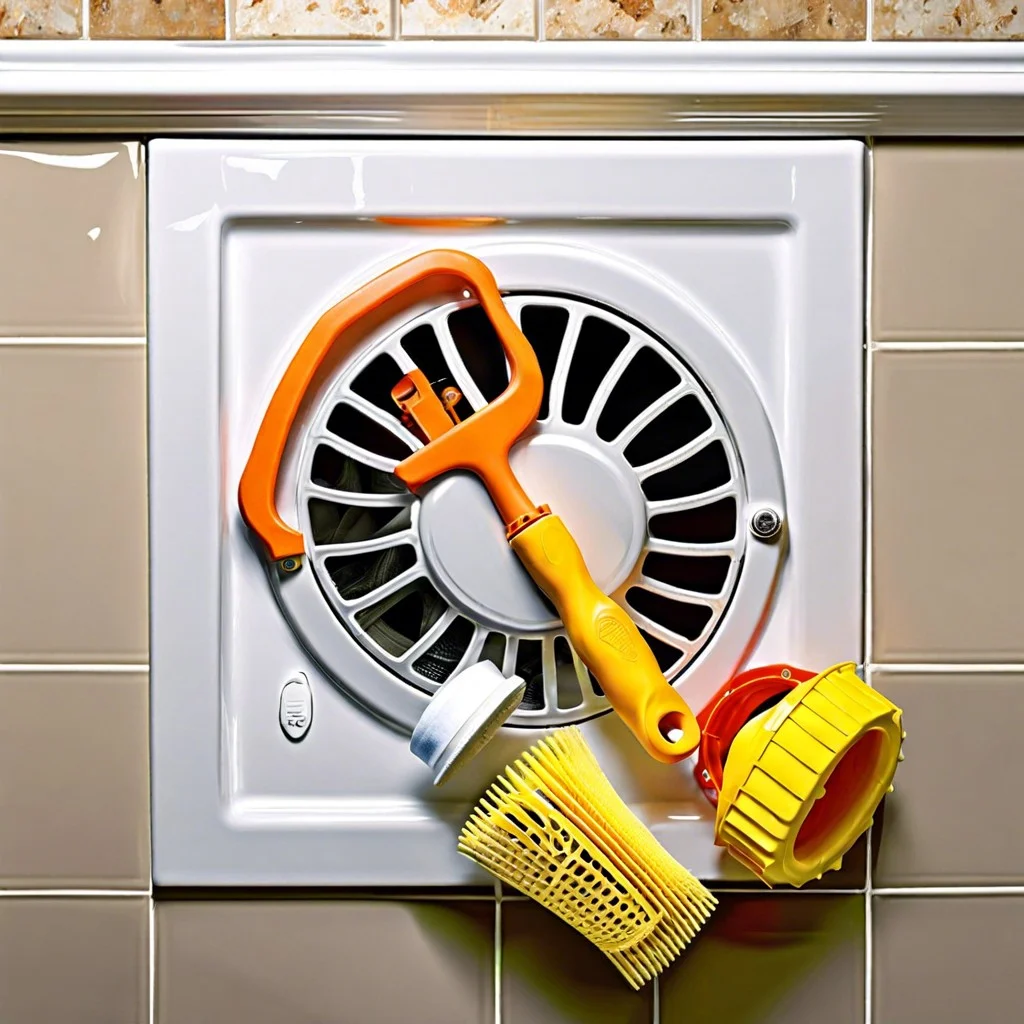Last updated on
Peeling back the layers on asbestos in ductwork, this article digs into its implications on health, methods of identification, and potential removal strategies.
Key takeaways:
- Professional testing is the most reliable method for identifying asbestos in ductwork.
- Asbestos fibers in heating ducts pose a significant health risk.
- There are two types of asbestos ductwork connectors: air-cell and cementitious.
- Asbestos exposure can occur for occupants of older homes and workers who disturb ductwork.
- Handling asbestos ductwork requires professional assessment and removal.
Identifying Asbestos in Air Ducts
Recognizing asbestos within your air duct system is pivotal. Before the dangers were known, asbestos-containing materials (ACMs) were typically used in insulation and other components because they provided excellent fire resistance and heat insulation.
Here’s how you can spot them:
- Keep an eye out for white or gray corrugated material around metal ducts, particularly at joints and seams, which is a tell-tale sign of ACM.
- If your building was erected or renovated between the 1940s and late 1970s, there’s a higher likelihood of asbestos presence.
- Insulation with a paper-like texture and a high tensile strength might indicate ACMs.
- On sight alone, distinguishing asbestos is notoriously tricky, making professional testing the most reliable method for identification.
Knowing these aspects is crucial, as undisturbed, intact asbestos may not pose immediate health risks, but if it’s damaged or deteriorating, the fibers can become airborne and hazardous. Hence, the emphasis here is on caution and expert involvement for accurate detection and subsequent management.
Asbestos in Heating Ducts Explained
Asbestos was once widely appreciated for its heat resistance and insulating properties, making it a common material in heating ductwork, particularly in buildings constructed before the 1980s. Its primary function was to contain and minimize heat loss as air traveled from the furnace through the ventilation system.
In older homes, this fibrous mineral can be found in tape, insulation wrapping, or the duct material itself. Visually, it often resembles white or gray corrugated paper but can also come in a plaster-like form that coats ducts. However, not all old duct insulation contains asbestos, requiring a professional assessment to confirm its presence.
When intact and undisturbed, asbestos-containing materials (ACMs) in ductwork pose less of a threat. Yet, if they become damaged or deteriorate over time, they can release airborne asbestos fibers. These fibers, invisible to the naked eye, pose significant health risks if inhaled. Hence, while they serve an important role in maintaining energy efficiency and safety in older heating systems, if suspected, an immediate professional evaluation is critical to ensure a safe living environment.
Health Risks of Asbestos in Heating Ducts
Asbestos fibers, when airborne, pose a significant inhalation danger. Prolonged inhalation can lead to chronic respiratory diseases, like asbestosis, and can significantly increase the risk of lung cancer and mesothelioma—a malignancy specific to the lining of the lungs or abdomen.
The presence of asbestos in ductwork becomes particularly hazardous during renovation or damage when these fibers can become dislodged. Once airborne, the fibers are easily inhaled by occupants, largely because the air ducts system circulates air throughout the building.
The latency period for asbestos-related diseases is lengthy, often 20 to 50 years, meaning symptoms may not surface until decades after exposure. This silent latency can make it challenging to connect past exposures to present-day health issues.
Regular maintenance and inspection of older heating systems are crucial to prevent potential exposure. If you suspect asbestos may be present in your home’s heating system, avoid disturbing the ductwork and seek professional assessment. The key is prompt action to reduce the risk and secure a healthy living environment.
Types of Asbestos Ductwork Connectors
There are predominantly two styles that were historically prevalent when it came to asbestos ductwork connectors: the air-cell and cementitious type connectors.
Air-cell connectors, resembling corrugated paper, were often used to encase the metal ducts, providing flexibility for heat expansion while retaining heat.
Cementitious connectors, on the other hand, had a more rigid, plaster-like composition.
Both types served the dual purpose of fireproofing and insulation but came with the high price of containing hazardous asbestos fibers which can become airborne if disturbed during renovations or repairs.
It’s crucial to identify these materials in older buildings since proper handling and removal require specialized procedures to ensure safety and compliance with health regulations.
How Were Asbestos Ductwork Connectors Used?
During the heyday of its use, asbestos ductwork connectors, also known as transite, played a crucial role in HVAC systems. Their ability to withstand high temperatures made them an industry favorite for connecting metal ducts. Particularly in residential settings, these connectors offered a flame-resistant and durable solution for joining sections of ductwork together.
Moreover, they were employed to minimize vibrations between ducts, contributing to a quieter operation. Commercial buildings also benefitted from these connectors due to their insulation properties, assisting in maintaining consistent temperatures within the ducts and improving energy efficiency. However, awareness of the health risks associated with asbestos exposure eventually led to the discontinuation of these materials in favor of safer alternatives.
Who Was Exposed to Asbestos in Heating Ducts?
Prior occupants of older homes, especially those built before the 1980s, likely experienced some degree of asbestos exposure due to the prevalence of asbestos-insulated heating ducts at the time. Maintenance workers, HVAC professionals, and contractors are also at risk, as their work often requires them to disturb ductwork, which can unknowingly release asbestos fibers into the air.
It’s crucial for these professionals to be aware of the potential dangers and to follow strict safety guidelines to minimize exposure. Additionally, during renovations or demolitions, construction workers without proper training might come into direct contact with these hazardous materials.
It’s not just the workers on the front line; even family members can be indirectly exposed to asbestos fibers brought home on clothing or tools. Understanding who is at risk reinforces the importance of proper identification and safe handling of asbestos to protect everyone’s health.
Basics of Asbestos Duct Insulation
Asbestos was a common component in duct insulation, particularly used for its fire-retardant and heat-resistant properties. These characteristics made asbestos materials ideal for regulating temperature and preventing fires in HVAC systems. The insulation could be found as a wrap around the ducts or as tapes sealing the joints.
It’s crucial to realize that despite the effectiveness of asbestos as an insulator, its fibers can be highly hazardous if disturbed and released into the air. Because of this, modern buildings have shifted towards using safer insulation materials, and asbestos is now regulated or banned in many countries.
When dealing with existing asbestos duct insulation in older structures, it’s key to avoid any action that could lead to fiber dispersal. Even routine maintenance can agitate the material, posing a health risk. Homeowners and maintenance personnel must stay informed about the potential presence of asbestos and seek professional assessment and removal if necessary.
How to Handle Asbestos Ductwork
If you suspect or know your ductwork contains asbestos, proceed with caution. Do not attempt to inspect or remove asbestos-containing materials yourself, as this can release harmful fibers into the air.
Here’s how to address the issue effectively:
1. Limit Disturbance: Avoid touching, moving, or disturbing the insulation, which could dislodge fibers. Leave the material alone until a professional can assess it.
2. Professional Testing: Hire an accredited asbestos professional to take samples for analysis. Only experts should handle suspected asbestos to prevent contamination.
3. Sealing Options: Sometimes, professionals may recommend sealing (encapsulation) over removal. This involves applying a sealant that binds the fibers together, preventing release.
4. Legal Removal: If removal is necessary, it must be done by a licensed asbestos abatement contractor who follows strict safety protocols and local regulations for disposal.
5. Follow Up: Post-removal, ensure air quality testing is performed to confirm that the environment is safe.
Always prioritize safety when dealing with these materials and rely on trained professionals to guide and perform the process.
Preventing Exposure to Asbestos
Given the serious health risks associated with asbestos, it’s paramount to mitigate any possibility of exposure. Homeowners should be vigilant if their homes were constructed before the 1980s when the use of asbestos materials was common.
Here are a few key points to help you prevent asbestos exposure:
- Professional Inspection: Have your property inspected by a certified asbestos professional, especially before any renovation work. They can determine if asbestos is present in your ductwork or elsewhere.
- Leave it Alone: If asbestos is found but is in good condition and not disturbed, it might be safer to leave it untouched. Disturbing it may increase the risk of fiber release.
- Seal Off Areas: When asbestos-containing materials are present, restrict access to those areas to minimize the chances of fibers becoming airborne.
- Follow Regulations: In the case that asbestos needs to be removed, it’s crucial to follow strict regulatory guidelines. Only licensed professionals should handle the removal process to prevent contamination.
- Regular Monitoring: If asbestos is present in an undisturbed state, monitor it regularly for signs of wear or damage. This could indicate a risk of fiber release, which should be addressed immediately by professionals.
- Educate Yourself: Understanding the risks and safety procedures concerning asbestos enables better decision-making, which can effectively reduce the risk of exposure.
- Avoid DIY: Do-it-yourself projects can inadvertently disturb asbestos. It’s essential to seek professional advice before starting any work that may affect your ductwork.
Compensation for Exposure to Asbestos Ductwork Connectors
Exposure to asbestos, particularly from ductwork connectors, can lead to serious health issues and financial strain due to medical costs. Fortunately, there are avenues for seeking compensation that individuals should be aware of:
1. Legal Claims and Litigation: Individuals who have developed health conditions due to asbestos exposure can file personal injury lawsuits against manufacturers and employers. The legal process can result in settlements or verdict awards that cover medical expenses and other related costs.
2. Asbestos Trust Funds: Many companies that used asbestos have established trust funds to compensate victims. Eligibility requires proof of exposure and a qualifying diagnosis.
3. Workers’ Compensation: If the exposure occurred during the course of employment, one may be eligible for workers’ compensation benefits, which can help with medical bills and lost wages.
4. VA Benefits: Veterans exposed to asbestos through military service may have the option to file for benefits through the Department of Veterans Affairs.
Navigating the process of obtaining compensation can be complex. Consulting with lawyers who specialize in asbestos-related claims can provide guidance and increase the chances of a favorable outcome. It’s vital to act promptly given the statute of limitations on such cases.
FAQ
Are HVAC technicians exposed to asbestos?
Indeed, HVAC technicians are at a risk of asbestos exposure, particularly during the process of maintaining, repairing, or replacing old systems and parts.
How do you know if you have asbestos?
To definitively determine whether you have asbestos in any material, it should be analyzed by a certified laboratory, particularly if the suspect material is deteriorating or likely to be disrupted during home improvements.
When did insulation stop having asbestos?
Asbestos stopped being used in insulation in the United States in 1975 when the Environmental Protection Agency (EPA) imposed a ban on asbestos pipe insulation and asbestos block insulation.
What are the health risks associated with exposure to asbestos?
Exposure to asbestos poses significant health risks such as lung cancer, mesothelioma, and asbestosis which cause respiratory issues and deteriorate overall health.
What safety protocols should be followed when working in environments suspected of asbestos presence?
When working in environments suspected of asbestos presence, one must adhere to proper safety protocols which include wearing personal protective equipment (PPE), sealing off the area to limit asbestos particles dispersion, implementing dust control measures, and engaging trained and licensed professionals to handle the asbestos materials.
How does asbestos contamination affect indoor air quality in residential settings?
Asbestos contamination can significantly degrade indoor air quality in residential settings by releasing harmful, microscopic fibers that can lead to serious health problems when inhaled or ingested.
Recap




